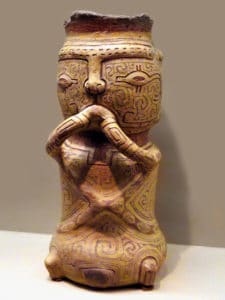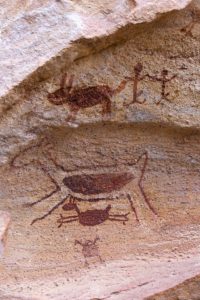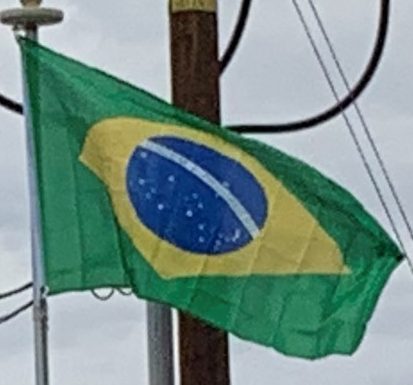The official Portuguese name of the land, in original Portuguese records, was the “Land of the Holy Cross” (Terra da Santa Cruz), but European sailors and merchants commonly called it simply the “Land of Brazil” (Terra do Brasil) because of the brazilwood trade. The popular appellation eclipsed and eventually supplanted the official Portuguese name. Some early sailors called it the “Land of Parrots”.
In the Guarani language, an official language of Paraguay, Brazil is called “Pindorama”. This was the name the indigenous population gave to the region, meaning “land of the palm trees”.
History:
Pre-Cabraline Era:
Some of the earliest human remains found in the Americas, Luzia Woman, were found in the area of Pedro Leopoldo, Minas Gerais and provide evidence of human habitation going back at least 11,000 years.

The earliest pottery ever found in the Western Hemisphere was excavated in the Amazon basin of Brazil and radiocarbon dated to 8,000 years ago (6000 BCE). The pottery was found near Santarém and provides evidence that the tropical forest region supported a complex prehistoric culture. The Marajoara culture flourished on Marajó in the Amazon delta from 800 CE to 1400 CE, developing sophisticated pottery, social stratification, large populations, mound building, and complex social formations such as chiefdoms.
Around the time of the Portuguese arrival, the territory of current day Brazil had an estimated indigenous population of 7 million people, mostly semi-nomadic who subsisted on hunting, fishing, gathering, and migrant agriculture. The indigenous population of Brazil comprised several large indigenous ethnic groups (e.g. the Tupis, Guaranis, Gês and Arawaks). The Tupí people were subdivided into the Tupiniquins and Tupinambás, and there were also many subdivisions of the other groups.
Before the arrival of the Europeans, the boundaries between these groups and their subgroups were marked by wars that arose from differences in culture, language and moral beliefs. These wars also involved large-scale military actions on land and water, with cannibalistic rituals on prisoners of war. While heredity had some weight, leadership status was more subdued over time, than allocated in succession ceremonies and conventions. Slavery among the Indians had a different meaning than it had for Europeans, since it originated from a diverse socioeconomic organization, in which asymmetries were translated into kinship relations.

Portuguese Colonization:
The land now called Brazil was claimed for the Portuguese Empire on 22 April 1500, with the arrival of the Portuguese fleet commanded by Pedro Álvares Cabral. The Portuguese encountered indigenous peoples divided into several tribes, most of whom spoke languages of the Tupi–Guarani family, and fought among themselves. Though the first settlement was founded in 1532, colonization effectively began in 1534, when King John III of Portugal divided the territory into the fifteen private and autonomous Captaincy Colonies of Brazil.
However, the decentralized and unorganized tendencies of the captaincy colonies proved problematic, and in 1549 the Portuguese king restructured them into the Governorate General of Brazil, a single and centralized Portuguese colony in South America. In the first two centuries of colonization, Indigenous and European groups lived in constant war, establishing opportunistic alliances in order to gain advantages against each other. By the mid-16th century, cane sugar had become Brazil’s most important export, and slaves purchased in Sub-Saharan Africa, in the slave market of Western Africa (not only those from Portuguese allies of their colonies in Angola and Mozambique), had become its largest import, to cope with plantations of sugarcane, due to increasing international demand for Brazilian sugar.
